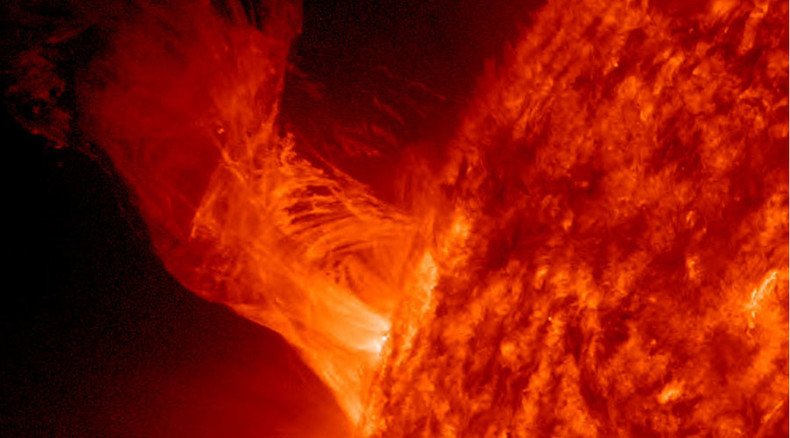Climate change not connected to solar activity, new sunspot analysis shows

Scientists have recalibrated their measurements of sunspot data proving that an upward trend in solar activity since the 1700s was an error. They say a theory holding it responsible for climate change was false.
The sunspot number has been a vital instrument in studying the sun’s dynamo, space weather and climate change. Until recently, scientists believed solar activity had been trending upward in the past three hundred years after a period known as the “Maunder Minimum” or “the little ice age.”
From the year 1645 to 1715, there were very few sunspots and the winters were particularly harsh. This span became known as the Maunder Minimum. This led some scientists to believe there existed a strong connection between sunspots and climate change. After that period, scientists used two separate methods to measure sunspot activity: the Wolf Sunspot Number and the Group Sunspot Number. These two numbers measured significantly different levels of sunspot activity from 1885 to about 1945.
However, the discrepancy has now been corrected by a team of scientists led by Frederic Clette, (Director of the World Data Centre [WDC]-SILSO), Ed Cliver (National Solar Observatory) and Leif Svalgaard (Stanford University, California, USA) who developed a new measurement called the Sunspot Number 2.0. According to their research, there was no Grand Maximum of solar activity in the middle of the 20th century as proposed by the Group Sunspot Number. Instead, solar activity has remained relatively constant since the 1700s.
READ MORE: ‘Power loss, aviation disruption, radiation’: UK warns solar storms could wreak havoc
The results, presented at the IAU XXIX General Assembly in Honolulu, Hawaii, speak against the correlation between solar activity and climate change. Instead, they demonstrate a period of homogenous solar activity for the past 400 years. The cause of the appearance of an upward trend was a major calibration error of the Group Sunspot Number which has now been corrected by the new model.
This recalibration is a major step forward in studying solar activity as the sunspot number is the only direct record of the evolution of the solar cycle over centuries and is the longest scientific experiment still ongoing.
The new sunspot number also means that previously valid climate evolution models will need to be reevaluated given the new picture of solar activity.












